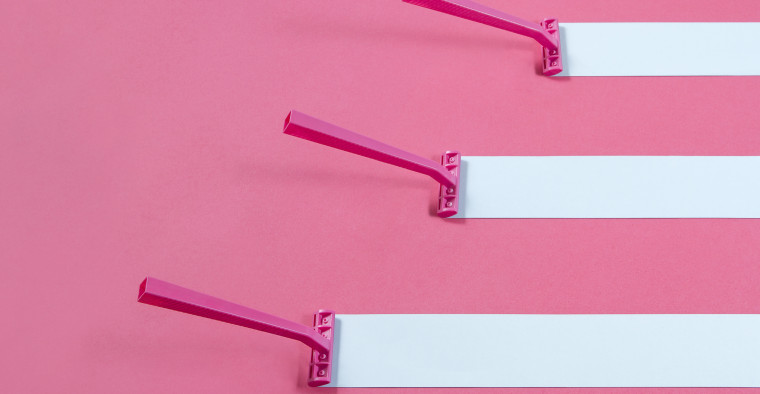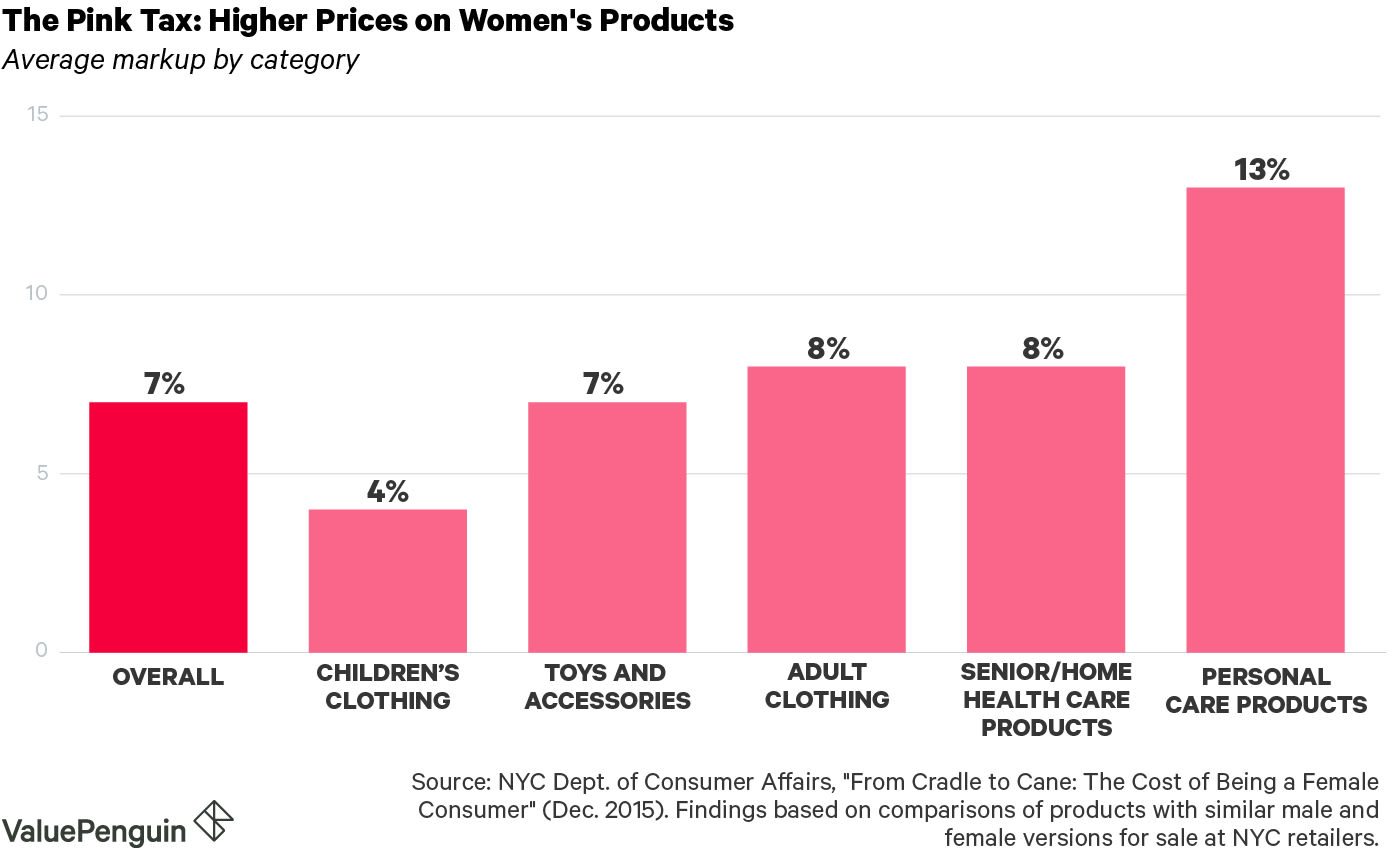Personal Finance
What Is the Pink Tax? (And Are You Paying It?)

For all the gender equality strides that have been made, it's still difficult to be a woman in 2019. Women only make 80.5 cents for every dollar men make, according to the Institute for Women's Policy Research. Only 24 women headed up companies on the Fortune 500 list in 2018. And half of the companies on the Russell 3000 index have one or no female directors on their boards.
Even though they have fewer opportunities to rise through the ranks of corporate America and earn less than men, women generally pay more for a variety of consumer goods.
"By the time a woman turns 30, she's been robbed of $40,562 just for being a woman," says Sherry Baker, president of product development and marketing at European Wax Center, which launched the campaign #AxThePinkTax. "Every year, a woman spends more than a man for products, including T-shirts, personal care items and services, because of inflated pricing."
What is the pink tax?
Baker is referring to the practice of charging more for products marketed to women, which are frequently pink. This includes products specific to women that are medical necessities, such as tampons. "The pink tax impacts each and every woman in the US, forcing us to pay more for basic necessities, for the mere fact of being a woman," says Baker.
History of the pink tax
The pink tax isn't new. It's been around for decades — since the sales tax system was drafted between the 1930s and 1960s. "It was a very different world, at a time when legislators were figuring out which products to tax and which to exempt," says Laura Strausfeld, cofounder of PeriodEquity.org. "It was a world in which it was single-income families, with men working and women staying at home."
In other words, in the old days, these expenses were borne by a household. Today, they're often paid by women alone. "This notion of the pink tax arises from the advances women have made in the workforce and bearing individually the cost of being a woman in the world," Strausfeld says.
There are other explanations for the pink tax. One is that tariffs on clothing imports for women are higher. Another chalks it up to product design for women's consumer goods often being more elaborate — pink razors, for instance. This runs up costs for a company, which then passes those costs down to the consumer.
How much does the pink tax cost women?
Estimates of how much women pay in pink taxes vary. In 1994, California ran a gender-pricing study and estimated that women paid an extra $1,350 every year, roughly, for personal care services, such as haircuts and dry cleaning. That's $2,135 in today's dollars.
In 2015 the New York City Department of Consumer Affairs did its own study, concluding that women and girls pay an average of 7% more than men and boys for consumer goods. That breakdown looks like this:

Products for women cost more in 30 of the 35 categories covered by the study. The report's takeaway: "In every industry, products for female consumers were more likely to cost more."
Studies haven't estimated the long-term cost of the pink tax. But it's clear that women will generally pay thousands more than men for services and products over a lifetime.
Items that get the pink tax markup
Women frequently pay more for products marketed specifically to them But they also pay more for services than men do. Some pink tax examples include:
- Tampons: Other medically necessary products, such as prescription drugs and neck braces, are exempt from state sales tax. But 36 states still tax menstrual products. It's called the "tampon tax."
- Personal care products: Shampoo and conditioner, razors, lotion, deodorant, body wash and shaving cream all fall under this category. Gillette, for instance, took heat over the fact that its women's razors cost more than men's.
- Dry cleaning: It costs more to dry-clean women's clothes than men's.
- Toys: Even for gender-neutral toys, such as bikes, scooters, backpacks, helmets and arts and crafts items, the ones marketed to girls cost more.
- Clothes: Clothing for women' and girls' see a higher markup than clothes for boys and men.
- Mortgages: Mortgages cost more for sole female borrowers. One reason is because of weaker credit overall. But other studies show women default less on mortgages than men, even controlling for credit differences. That means single women are paying more than they should.
- Haircuts: Women pay more for a haircut than men, even when their hair is the same length.
- Senior or home health care products: Supports and braces, canes, compression socks, adult incontinence products and digestive health products cost more for senior women than senior men.
How to fight the pink tax
There are a few ways to fight back against this practice. The first is to buy from companies taking a stand against the pink tax. Boxed, for instance, has reduced the pricing on its women's products so they're the same price as the men's. Billie, a subscription shaving company, claims to offer pricing that's comparable to men's razor subscriptions. Even Burger King has staged its own campaign against pink pricing.
Aside from supporting companies with gender-neutral pricing, you can choose not to buy products marketed specifically to women. But if you want your state to ban the pink tax altogether, get in touch with your state representatives. "Voice your outrage about it," Strausfeld says. "The more people who call their state representatives, the more support these people have to put forward bills to remove the tax." Find your government representatives here.
